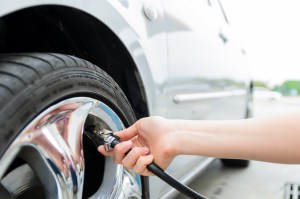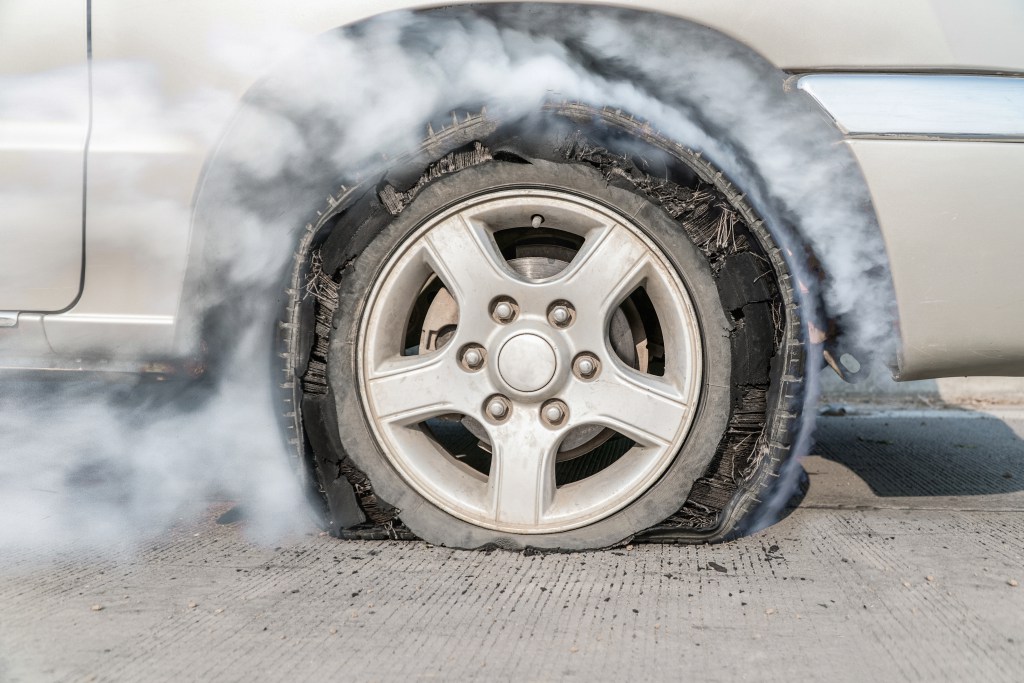Spare Tire Blues: Three Tips for New Car Owners
Here’s the situation. You’re on a road trip with the family. You stop for food and fuel and you notice one of the tires is a little low. Fortunately the convenience store has an air compressor and you’re back on the road in no time.
A little while later you’re out on the highway between exits and the car starts handling funny. There’s barely any room to pull over. When you stop and get out to take a look, the big trucks whooshing by set your nerves on edge.
“Oh, shoot,” you say to yourself. The tire’s flat, so you head to the trunk for the spare. The car is practically new, so you probably just ran over a nail or something. After unloading half the contents of the trunk onto the ground, you notice something you hadn’t noticed before – your brand new sedan didn’t come with a spare.
Get rid of that unsightly spare tire
Just this morning, I saw a story from the AAA that contained a surprising statistic: nearly one?third (28 percent) of 2017 model year vehicles do not come with a spare tire as standard equipment, creating unnecessary hassles for drivers. Evidently it’s just one more way automakers are reducing car weight to meet ever-tightening fuel economy standards.
Unnecessary is right. Even if you’re unable to fix a flat yourself, there are usually Good Samaritans around who can help you in a pinch. Unless you don’t have the necessary replacement wheel.
Last year alone, the AAA announced that 450,000 of its members got a flat tire, but didn’t have a spare.
Here’s my recommendation
Before you take your next road trip, check to make sure you have a jack and a spare tire in your trunk. It could save you a ton of grief.
Here’s another headache related to spare tires in newer cars.
 In an effort to ensure that cars have optimal tire pressure for best fuel economy, tires on some cars contain sensors that “talk” to the car’s brain box, which illuminates a warning light when tire pressure is low. I learned about this high-tech system while attending the Automotive Oil Change Association show a couple years ago. Someone there shared a story about his indicator light illuminating. He stopped at the nearest gas station and checked tire pressure in all four tires. All good. He got back on the road and the light came back on. Eventually he figured it out. The tire pressure in his spare was low.
In an effort to ensure that cars have optimal tire pressure for best fuel economy, tires on some cars contain sensors that “talk” to the car’s brain box, which illuminates a warning light when tire pressure is low. I learned about this high-tech system while attending the Automotive Oil Change Association show a couple years ago. Someone there shared a story about his indicator light illuminating. He stopped at the nearest gas station and checked tire pressure in all four tires. All good. He got back on the road and the light came back on. Eventually he figured it out. The tire pressure in his spare was low.
The article I read mentioned that there are new cars that come equipped with a tire-inflator kit to help get you back on the road in the event of a flat so you can reach safety. They suggest you familiarize yourself with the way these devices work. That is, don’t wait until a flat at 2:00 a.m. on Highway 80 through Chicago to figure it out. Read the instructions when you first get the car. While you’re at it, check the expiration date. Four to eight years is the usual lifespan on these items.
Just a few tips to help ensure your next road trip goes smoothly.


